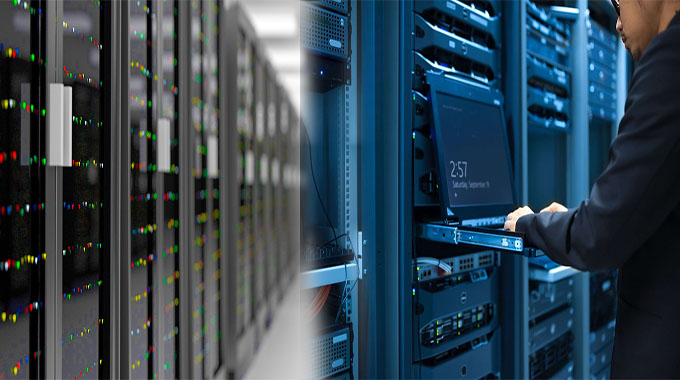Data centers are one of the most important parts of any business. They provide a place for the company to store its data and keep it safe from cyberattacks and natural disasters. Data centers also help with faster processing speeds by separating workloads across servers, storage devices, and networks. But what exactly are these networks? How do they work together? And why do they need to be connected in certain ways? Let’s start with an overview of the topologies used in data center design:
Star Topology
Star topology is a network design in which all devices connect to a central connection point. This type of topology is ideal for small networks, as it’s easy to install and manage. A hub or switch acts as the central connection point, distributing data between all other components on your network.
The downside: if you want to expand your star-based network, it can get complicated quickly–you’ll have to add more hubs or switches (and possibly new cables) in order for every node on your system to communicate with each other at high speeds. The same goes for troubleshooting; if one part of your system goes down due to an issue with its cable or port, then all parts connected via those cables go down too–which could mean losing access entirely!
Bus Topology
In a bus topology, each node is connected to the main cable with a dedicated connection. This means that all nodes have a single point of entry into the network and can send and receive data simultaneously.
Bus topologies are simple to install but difficult to troubleshoot because they lack any redundancy in case of failure. If one node goes down, everyone else has no way around it unless they’re able to reroute their signals through another path on their own (which isn’t always possible).
Ring Topology
In a ring topology, each computer is connected to two other computers in the network. This means that there is only one cable running between each computer. If this cable breaks or becomes unplugged, then it can bring down the entire network because all of its traffic must be sent through this one cable.
The ring topology uses special network cards called “token-ring adapters” or TRAs (pronounced “trahs”). These adapters are used to communicate with other computers on your local area network (LAN). You can identify these adapters by looking at them; they resemble standard RJ45 ports but have an extra jack on them called an “AUI.”
Mesh Topology
Mesh topology is a network topology where each node is connected to two or more other nodes in the network. In this type of topology, all nodes are connected to each other and there is no central point of failure. This means that if one node fails, it does not affect any other node in the network because they are all inter-connected. Mesh networks can be used on both small and large scale networks such as home routers, wireless access points, cellular base stations etc., but they’re typically used in smaller environments where there aren’t many devices connected at once so that each device will still maintain high throughput rates even when traffic increases over time (which tends not happen often).
Hybrid Topology
Hybrid topology combines two or more topologies in a single network. A hybrid topology can be used to combine the benefits of two different types of networks, such as combining the flexibility and fault tolerance of a ring network with the speed and scalability of a star network. For example, consider a hybrid star bus topology in which each node has three ports: one for connection to its neighbor on both sides and another for connecting directly to its hub station. In this case, all traffic passes through only one switch at each level–the hub station–which makes it easier for administrators to manage their resources because there are fewer devices involved than in other topologies (such as mesh).
Data centers use several topologies
Data centers use several topologies, each with their own advantages and disadvantages. The most common topologies are star, bus and ring.
In a star topology, all devices connect to a central hub that acts as the main pathway for communication between nodes. This is useful if you have one server but many users accessing it because it makes managing traffic easier than in other types of networks. However, if anything happens to your hub or power supply then everything connected goes down with it!
In contrast to this centralized approach is the bus topology where all computers communicate over one common line or backbone cable (like some early Ethernet networks). This means that if someone accidentally pulls out this cable then everyone loses their connection immediately–which could be disastrous if they were downloading large files at the time!
Data centers use several topologies, but the most common one is star. It’s easy to understand and implement, and it works well in most situations. However, if your data center needs to support more than 10 Gbps of traffic at any given time then it might be worth considering other options like ring or mesh topology instead because they can scale better than star networks do at high speeds while still maintaining reliability through redundancy.














